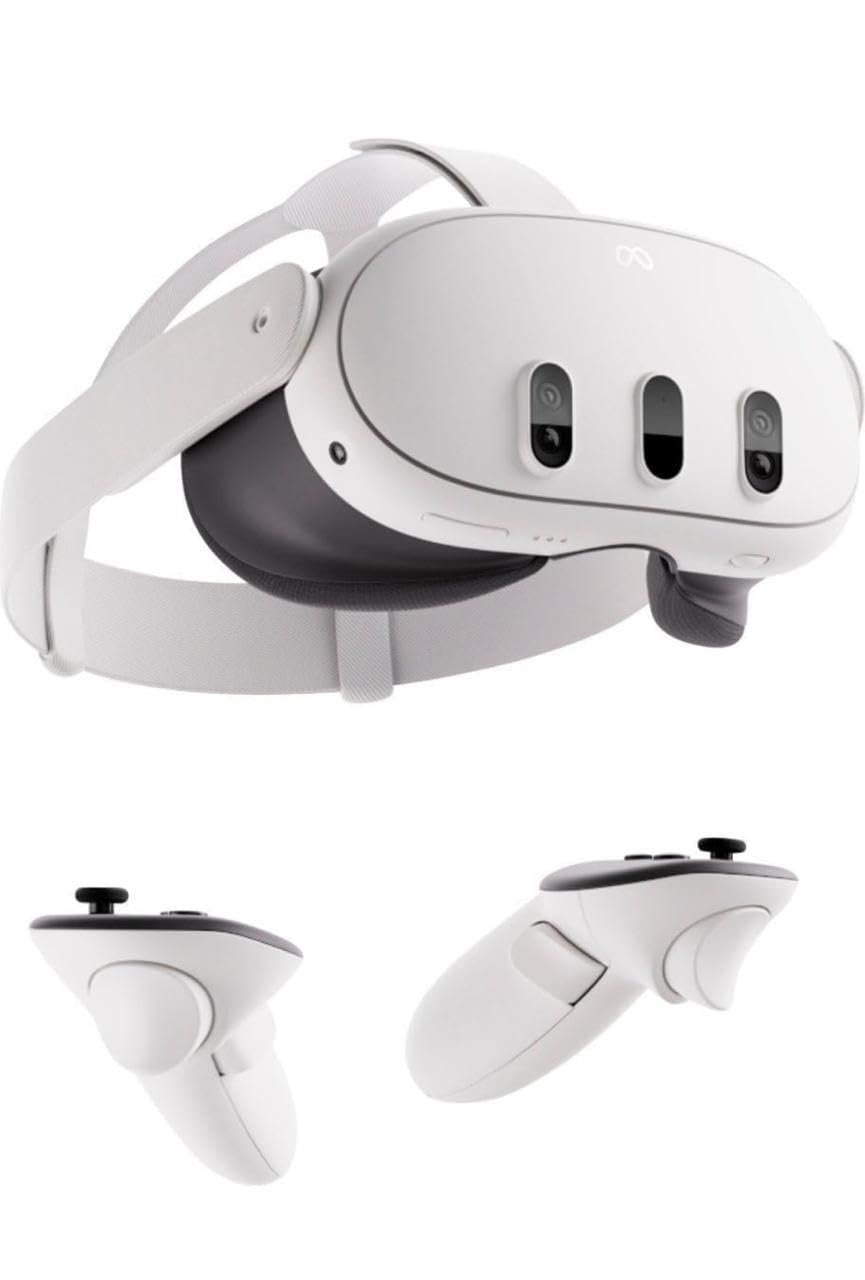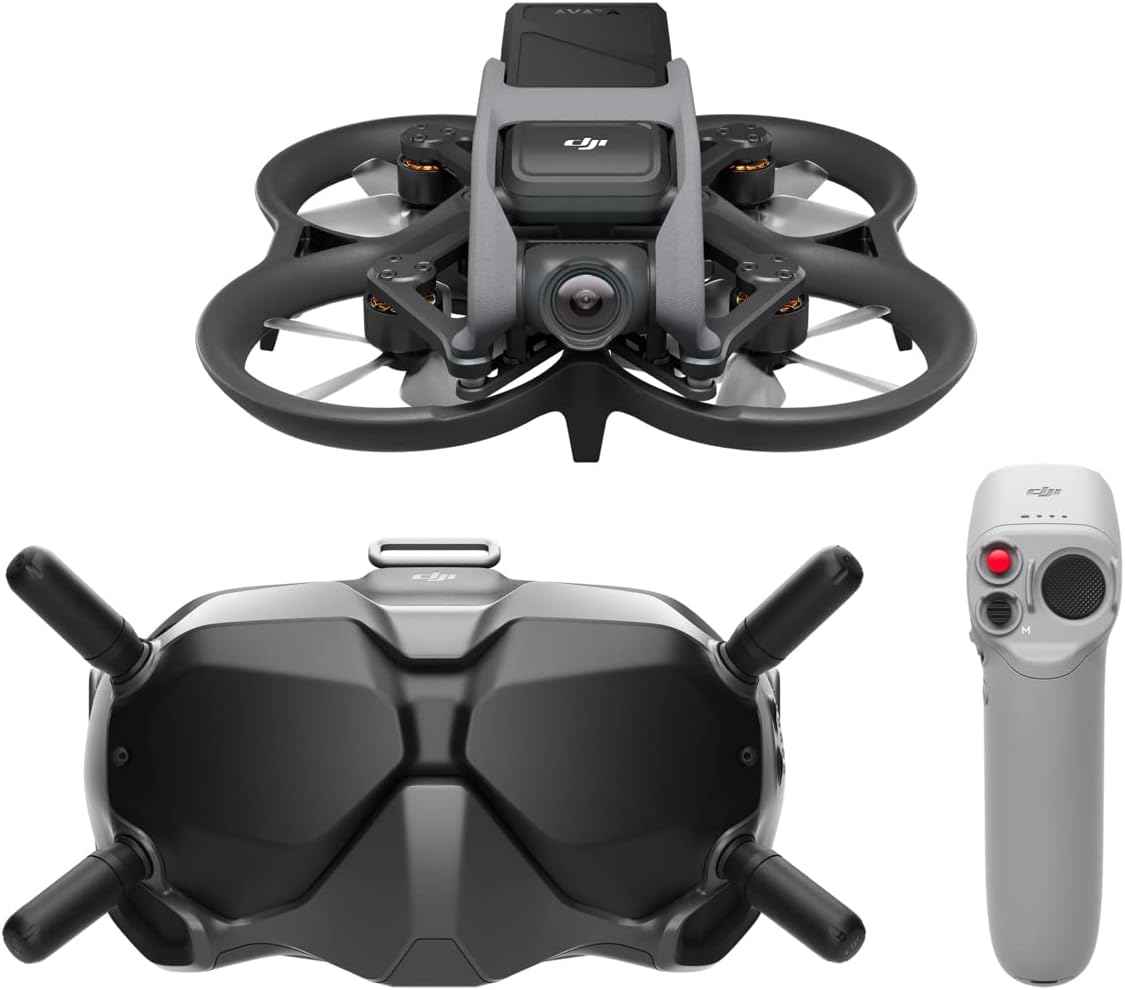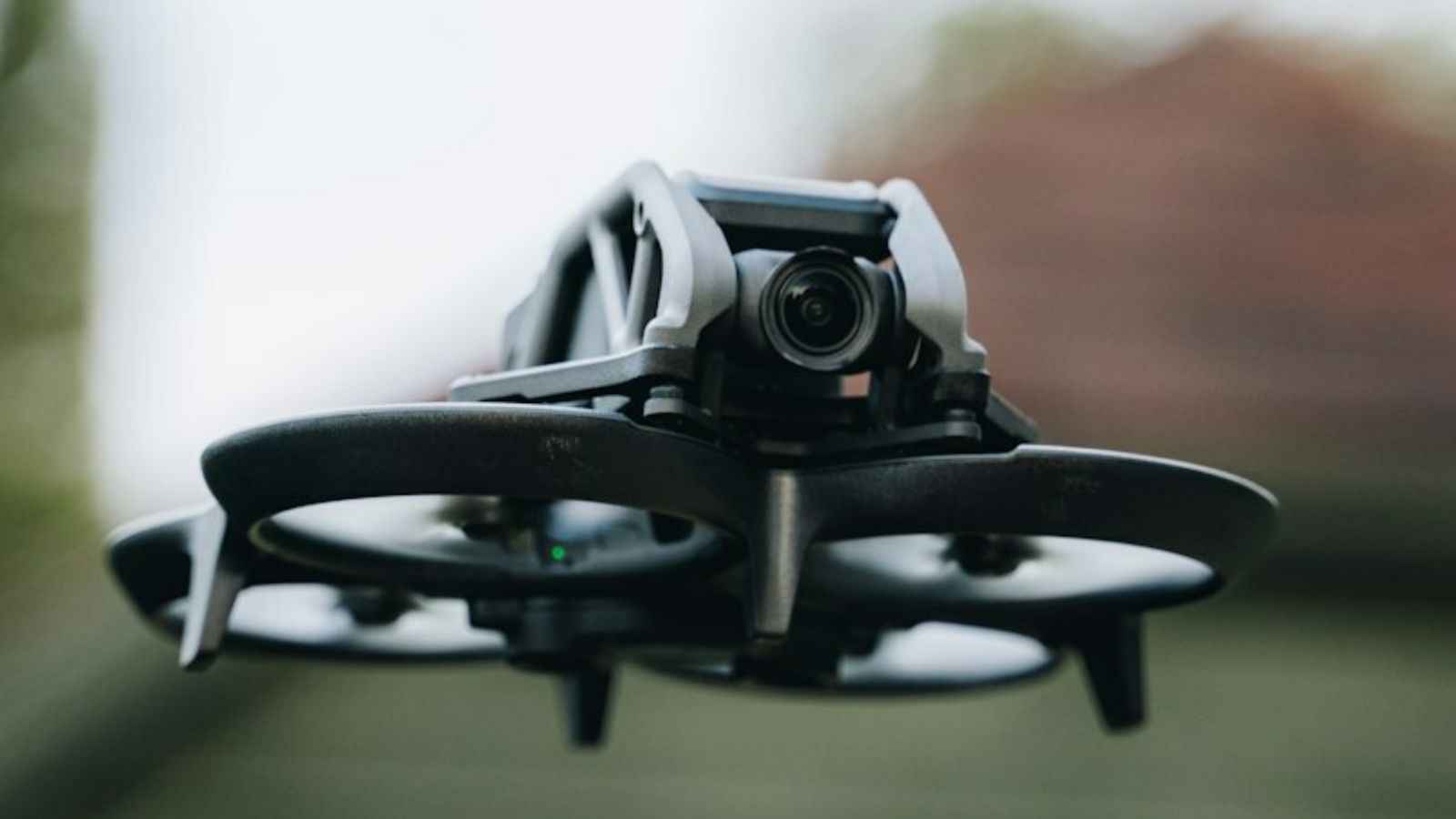Introduction
When DJI burst onto the high-speed, first-person view (FPV) drone scene with the FPV Combo last year, it was an exhilarating leap into the world of adrenaline-pumping quadcopters. As a passionate drone enthusiast, I couldn’t wait to get my hands on their latest creation, the DJI Avata.
Priced at $936.67, the Avata promised a smaller, lighter frame that could effortlessly navigate even the tightest of spaces. The prospect of exhilarating speed was enticing, but I soon discovered a caveat during testing – the absence of forward-facing obstacle sensors led to some heart-pounding crashes. Thankfully, robust prop guards and a well-protected camera enclosure meant the Avata could endure these mishaps.
Yet, safety concerns loomed large, and despite its ability to capture thrilling video, I’d advise caution when flying it near people or in public spaces. Join me as I delve into the highs and lows of the DJI Avata in this comprehensive review.
Highlights
- 410g (0.9 lbs.) total weight
- 180×180×80mm
- Type 1/1.7 (7.6×5.7mm) 48MP CMOS image sensor
- 12.6mm equivalent lens (155º FOV)
- Ability to capture photo and video on the same flight
- 4K/60p and 2.7K/100p flight at 150Mbps (with new Goggles 2)
- H.264 and H.265 video codecs
- Emergency brake and hover
- Downward obstacle sensing
- DJI’s O3+ transmission system for 10km range, dual frequencies, 50 Mbps bitrate
- 18-minute max flight time
- 97 kph (60 mph) max speed
- Turtle mode that corrects drone’s orientation before take-off
Other Features
- Remote ID Compliance: The DJI Avata comes equipped with a built-in Remote ID system, ensuring adherence to evolving drone regulations in select regions. This feature simplifies responsible drone operation by enabling authorities to identify and track the drone in real-time.
- Obstacle Avoidance: Enhancing safety, the Avata is outfitted with front and downward obstacle avoidance sensors. While not as extensive as other DJI models, these sensors help prevent collisions and crashes, providing valuable protection for pilots.
- DJI Fly App Compatibility: Users can harness the power of the DJI Fly app with the Avata, granting access to a host of additional features and settings. This includes waypoint navigation and various camera controls, along with a live camera feed for real-time monitoring and precise shot framing.
- Customizable LEDs: The Avata offers a unique touch with customizable LED lights on its arms and body. This feature not only lets pilots personalize their drone but also enhances visibility during nighttime flights, making it both stylish and practical.
Build Quality and Compact Size
One of the most striking features of the DJI Avata that immediately caught my attention is its compact size. This drone truly embodies the essence of portability, and I’ve found it to be an excellent companion for my travels.
Its diminutive form allows it to slip effortlessly into my backpack, alongside spare batteries, FPV goggles, the remote controller, and other essential gear. For frequent travelers and adventure-seekers like myself, the Avata’s space-saving design is a godsend, ensuring that it doesn’t consume too much precious packing real estate.
At first, I admit to having reservations about the Avata’s plastic build. Having had experiences with other drones, notably the DJI FPV, I was concerned that this lightweight construction might translate into fragility. However, my apprehensions were pleasantly proven wrong.
The Avata has displayed remarkable durability during my tests, shrugging off several accidental crashes with ease. While it has proved resilient so far, I do hold a lingering concern about the rigid ducts, fearing they could eventually succumb to wear and tear. The prospect of replacing these components also appears to be a potential challenge.
A notable quirk in the Avata’s design lies in the placement of the SD card slot and USB-C port. They are somewhat inconveniently positioned between the propellers, making access a bit of a hassle, particularly if one lacks long fingernails or the appropriate tools.
Many users have opted to leave the SD card inside the drone, resorting to a right-angle USB cable to download video files directly. While this workaround is functional, it undeniably comes with a trade-off in terms of speed compared to the traditional method of inserting the SD card into a computer.
The presence of a five-blade prop configuration further complicates this issue. While it would have been preferable for DJI to choose a more accessible location for these critical components, it seems that, for now, we’ll have to make do with their current placement, a minor inconvenience in an otherwise exceptional drone.
DJI Avata Battery and Impressive Flight Time
The DJI Avata’s battery system stands out as a testament to smart engineering, boasting smart charging and discharging capabilities. Powered by a 4S 2420mAh Li-ion battery, this drone promises a substantial flight time of up to 18 minutes, a claim that piqued my interest from the start. However, as is often the case with advertised flight durations, real-world testing painted a slightly different picture. In practice, I found that the Avata typically delivers around 11 to 12 minutes of manual flight time. While this might fall short of the initially touted 18-minute mark, it’s still an impressive feat for a drone of such compact proportions.
It’s essential to note that several factors can influence the Avata’s flight time. Unfavorable weather conditions, particularly cold weather and gusty winds, can take a toll on battery performance, causing it to deplete more rapidly. Additionally, attaching extra payloads, such as a GoPro, can also contribute to a shorter flight duration. Despite these variables, the Avata manages to hold its own in the air, offering a satisfying flight experience that caters to a variety of needs.
One drawback that stems from the Avata’s battery system is its proprietary design. While this approach enhances compatibility and reliability, it does pose a potential challenge for those seeking to acquire replacement or spare batteries. This limitation can be less than ideal for avid pilots who wish to prolong their flying sessions by swapping out batteries. To mitigate the risk of battery ejection during hard crashes, it is recommended to secure the battery with a custom Velcro strap, a practical precaution to safeguard your investment and ensure uninterrupted flights. Overall, the DJI Avata’s battery system, despite its minor shortcomings, impresses with its reliability and endurance, making it a key asset for drone enthusiasts on the go.
Flight Characteristics and Reliability
One of the standout qualities that make the DJI Avata an absolute favorite for me is its unwavering reliability. When it comes to flying a drone, reliability is paramount, and the Avata certainly doesn’t disappoint.
Its dependable return-to-home function and failsafe features offer peace of mind, eradicating the constant worry of losing a valuable drone during challenging flight scenarios, like navigating behind obstructing buildings or pushing the boundaries of radio and video signal ranges. This newfound level of reliability has elevated the Avata above other custom-built best FPV drones in my book, as I’ve come to trust it implicitly.
That said, it’s important to address some nuances in the Avata’s flight characteristics. One noticeable factor is its top-heavy nature, primarily attributed to the placement of the flight battery. This is a common challenge for Cinewhoops carrying additional equipment like a GoPro, and it’s not something that can be entirely rectified with software adjustments.
Nevertheless, I found that fine-tuning the rates to align with my personal preferences helped mitigate this issue, making the drone feel less twitchy and more comfortable to handle in various flight conditions.
An interesting caveat with the Avata lies in its pusher prop configuration, which, while offering advantages in certain aspects, renders hand-landing a risky endeavor. I strongly discourage attempting hand-landings with this drone, which might inconvenience those accustomed to launching and landing drones manually in tight or tricky locations. It’s a trade-off to consider when evaluating the Avata’s suitability for your specific needs.
Furthermore, while the return-to-home feature is undoubtedly a valuable asset, it can occasionally pose challenges of its own. For instance, in indoor environments, I’ve encountered situations where a low battery triggered the drone to rise towards the ceiling, struggling to find its way back to the pilot.
To navigate around this potential pitfall, it’s imperative to remain vigilant regarding battery life and the return-to-home settings, ensuring a seamless and hassle-free flying experience. In the grand scheme of things, these minor quirks do little to diminish the overall appeal of the DJI Avata, a reliable and versatile drone that consistently delivers on its promises.
Camera Image Quality
The camera of the DJI Avata is nothing short of impressive, offering a blend of quality and versatility that sets it apart. Equipped with a 1/2-inch CMOS sensor, this camera boasts the capability to capture stunning 4K video at an impressive 60 frames per second, while also delivering high-resolution 12-megapixel still images.
What truly stands out is its wide dynamic range, which ensures that even in the most challenging lighting conditions, the Avata’s camera excels in preserving details and clarity in the captured imagery.
One of the standout features of the DJI Avata’s camera is its generous field of view, a characteristic that significantly enhances post-production flexibility. The built-in gyro data capability adds another layer of value by enabling further stabilization of footage through applications like Gyroflow. This feature is particularly invaluable for those engaged in professional work, where smooth and stable footage is paramount.
Another remarkable attribute of the Avata’s camera is its adjustable angle. Pilots have the freedom to modify the camera angle, ranging from a straight-down position to a 60-degree upward tilt. This versatility opens up a world of possibilities, allowing for the capture of unique angles and perspectives that can add depth and creativity to your aerial shots.
For FPV flying enthusiasts, this feature is especially beneficial as it offers enhanced visibility of the flight path, ensuring a clearer view and greater control over your drone’s trajectory. In sum, the DJI Avata’s camera excels in delivering exceptional image quality and flexibility, making it a compelling choice for both amateur and professional drone photographers and videographers alike.
Capture creative footage with the DJI Avata FPV drone
The DJI Avata FPV drone has truly opened up a world of creative possibilities when it comes to capturing captivating footage. What sets this drone apart is its remarkable versatility. While it excels in capturing exhilarating FPV-style footage, it offers a unique twist by allowing you to switch gears and produce content that mirrors the stability of traditional drones with a leveled horizon. This dual capability unleashes a broad spectrum of creative options for both beginners and seasoned drone pilots alike.
The beauty of the Avata lies in its ability to seamlessly transition between these two modes, enabling you to explore the adrenaline-fueled thrill of FPV flight while also delivering the cinematic smoothness of traditional drone shots. It’s this balance between excitement and precision that makes the Avata a standout choice for content creators looking to push the boundaries of their creativity.
Personally, I’ve found immense joy in navigating this drone through lush forests, capturing breathtaking proximity shots that immerse viewers in the heart of nature’s beauty. The Avata’s agility and adaptability empower pilots to explore tight spaces and capture shots that were once considered challenging. Whether you’re seeking heart-pounding FPV adventures or breathtaking cinematic sequences, the DJI Avata FPV drone emerges as the ideal tool to bring your creative vision to life, offering a versatile canvas for your imagination to soar.
The app, obstacle avoidance and flight modes
The DJI Avata’s dedicated app offers a streamlined and intuitive interface designed for effortless navigation. Unlike some of DJI’s more feature-rich apps, the Avata’s Fly app keeps things simple, with just three accessible menus you can swipe to access.
The camera settings line the bottom of the screen, ensuring quick adjustments, while a convenient Shortcut menu sits at the top for easy access to essential functions. The main menu, easily navigable with a tap of two fingers, rounds out the app’s user-friendly design, allowing pilots to focus on their flights and creative endeavors without unnecessary complexity.
One notable aspect of the Avata’s obstacle avoidance system is its unique approach. Equipped with built-in propeller guards, this drone relies on only two obstacle detection sensors on the bottom. These sensors serve the critical function of determining whether ground conditions are suitable for landing, making decisions like avoiding bodies of water, for instance. While the system may not be as comprehensive as some of DJI’s other models, it ensures a level of safety and reliability essential for confident flying.
When it comes to flight modes, the DJI Avata offers three distinct options tailored to various pilot preferences and skill levels. In Normal (N) mode, the drone operates at a controlled speed of 28.8 kph (about 18 mph), offering easy braking and the stability of GPS plus GLONASS for precise hovering. Sport (S) mode elevates the excitement by nearly doubling the speed to 50.4 kph (31 mph), delivering an exhilarating flight experience. The Manual (M) mode, accessible only with the FPV Remote Controller 2, unleashes the Avata’s full potential, rocketing it to a maximum speed of 96.5 kph (60 mph).
It’s crucial to emphasize the need for practice and preparation before venturing into Manual (M) mode, as it removes all flight restrictions. The responsiveness and agility in this mode can be overwhelming for novices, leading to potential crashes. To address this challenge, the introduction of Turtle mode comes to the rescue, allowing pilots to flip the drone over without physical intervention if it lands on its back.
Additionally, the Find my Drone feature proves invaluable for locating a lost or crashed drone, combining beeping, light flashing, and 30-second video playback to assist in retrieval, providing peace of mind for every pilot’s adventures.
The DJI Goggles 2
The DJI Goggles 2 bring a host of enhancements and improvements to the table, making them a compelling choice for FPV enthusiasts and professionals. Their compact design, superior image quality, and enhanced signal capabilities make them an excellent companion for immersive and exhilarating drone flights or cinematic endeavors. Nevertheless, potential issues like overheating and discomfort due to foam padding merit consideration, emphasizing the need for ongoing solutions to ensure a seamless and enjoyable FPV experience.
DJI FPV Controller 2
The FPV Controller 2 emerges as the highly recommended and sought-after controller for the DJI Avata drone, and the exciting news is that it’s now available for purchase separately. For those seeking a more traditional and precise flying experience with the Avata, this controller is the go-to choice. It’s designed to offer a level of control and responsiveness that surpasses what the included RC Remote 2 can provide.
One of the striking features of the FPV Controller 2 is its compact and ergonomic design. It bears a striking resemblance to the TBS Tango 2, a popular and well-loved controller among FPV enthusiasts. This familiarity makes it an attractive and comfortable option for many seasoned FPV pilots, as it offers a sense of continuity in their flying experience. The controller’s intuitive layout and ergonomic grip ensure that pilots can confidently navigate their Avata drone through even the most demanding flight maneuvers, enhancing their overall flying experience.
DJI Avata makes some noise
While the DJI Avata undoubtedly shines in numerous aspects, it’s important to acknowledge that no drone is without its set of limitations, and the Avata is no exception. Some of these limitations are not specific to the Avata but are inherent to the FPV drone category as a whole. One such consideration is the noise level generated by these drones. When transitioning from a quieter drone like the Mavic series to a drone like the Avata, the stark contrast in sound becomes evident.
FPV drones, including cinewhoops like the Avata, tend to produce a significant amount of noise. This is not a unique characteristic of the Avata but rather a common trait among FPV drones. The unmistakable roar of the motors and propellers can draw attention from a considerable distance.
In scenarios where you’re flying in a park or a public area with bystanders, the noise generated by these drones can become quite noticeable. Stealthy and inconspicuous flying is simply not an option with a drone like the Avata, and it’s crucial to be aware that your flights are likely to attract attention due to the sound these drones produce.
Pros and Cons of DJI Avata
Pros
- Impressive 4K/60p video capabilities.
- Effective propeller guards for enhanced safety.
- Generous 20GB of internal storage for your footage.
- Hovering, braking, and Return to Home features add flight stability and security.
Cons
- Limited 8-bit D-Cinelike mode for video.
- Restriction to JPEG format for photos.
- Produces a substantial amount of noise during flights.
- Less compact and flexible compared to some other FPV drones on the market.
Bottom Line
In conclusion, the DJI Avata represents a compelling addition to the world of FPV drones. With its ability to capture stunning 4K/60p video, robust propeller guards for added safety, and a convenient 20GB of internal storage, it offers a mix of features that cater to both recreational and professional users.
The Avata’s flight stability, including hovering, braking, and Return to Home functions, enhances the flying experience. However, it’s essential to consider its limitations, such as the 8-bit D-Cinelike mode for video, the restriction to JPEG photo format, and the notable noise it generates during flights. While it may not be the most compact or flexible option in the FPV market, the DJI Avata undoubtedly appeals to those seeking high-quality aerial photography and an exhilarating FPV experience. Ultimately, it’s a drone that strikes a balance between creative potential and practicality, making it a worthy choice for a range of drone enthusiasts.
Frequently Ask Questions-DJI Avata
-
How do I link the DJI Avata system?
1. Power on the aircraft, goggles, and remote control device.
2. Press the link button on the goggles, which will start beeping continuously.
3. Hold the power button of the aircraft until it beeps once, and the battery level LEDs blink.
4. Successful linking is indicated when the aircraft’s battery LEDs turn solid, and the goggles stop beeping, displaying the live view. -
How can I activate DJI Avata?
1. DJI Avata must be activated via the DJI Fly app or DJI Assistant 2 (Consumer Drones Series) before first use.
2. Connect the goggles to your smartphone through the USB-C port and run the DJI Fly app to follow activation prompts. An internet connection is required. -
How can I update the firmware of DJI Avata?
Method 1: Using DJI Fly
1. Ensure all devices are powered on and linked.
2. Connect the goggles to your smartphone via USB-C, run the DJI Fly app, and follow on-screen instructions for updating.
Method 2: Using DJI Assistant 2 (Consumer Drones Series)
1. Connect the device to a computer via USB-C.
2. Open DJI Assistant 2 (Consumer Drones Series), log in with your DJI account.
3. Select the device, click “Firmware Update” on the left side, and choose the firmware version.
4. The firmware will download and update automatically, with the device restarting when complete. -
Which goggles does DJI Avata support?
DJI Avata supports DJI Goggles 2 and DJI FPV Goggles V2.
-
Which remote controllers does DJI Avata support?
DJI Avata supports DJI Motion Controller and DJI FPV Remote Controller 2.





7 comments
calmcdowell
Chinese gear is getting pretty close to ours. That’s both impressive and a bit concerning.
Source URL
quidproquid28
Chinese military tech is improving rapidly.
Source URL
slvneutrino
That rifle looks mid honestly. It’s like the modern AK we have at home.
Source URL
gahhhpoop
So basically the Chinese have caught up to us lol
Source URL
yummy_sandwich1
Bet those drones are made in china.
Source URL
CyberSoldat21
QBZ-191 looks slick ngl
Source URL
Gordo_51
Cool photo ngl
Source URL